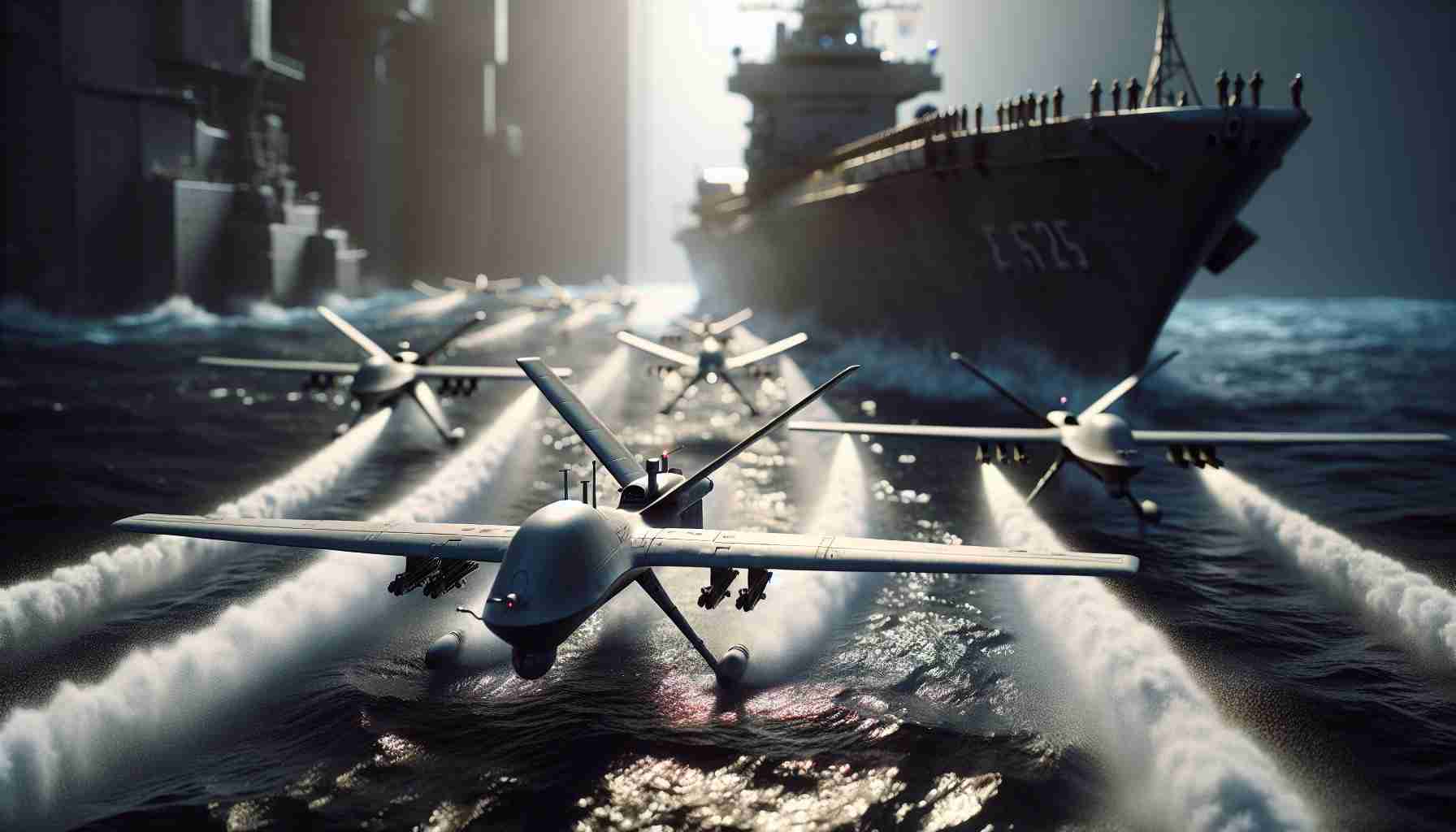In a groundbreaking event on November 12th, South Korea stepped into an elite global circle. Launching a Mojave drone from the navy warship ROKS Dokdo in the Sea of Japan, the nation showcased its advancement in naval aviation. The Mojave, remotely managed by a pilot stationed miles away on land, took flight from the ship’s deck, marking a significant milestone.
Prior to this, South Korea had never managed fixed-wing aircraft operations from its navy vessels. However, the ROKS Dokdo, primarily designed as an amphibious assault ship rather than a traditional aircraft carrier, facilitated this inaugural drone launch. Its design limitations in terms of deck length and elevator weight capacity, making it generally unsuitable for aircraft like the F/A-18E/F Super Hornet, did not impede the Mojave’s remarkable performance.
The Mojave, advanced by General Atomics, boasts a 29-foot length and a wingspan of 52 feet, capable of enduring flights for up to 25 hours. Originally based on the U.S. Army’s MQ-1C Gray Eagle drone, Mojave promises cost-effective, swift deployment, and versatile utility across multiple mission types. Its ability to perform on short takeoff and landing (STOL) runways, including ship decks, redefines naval aviation dynamics.
The advent of drones like the Mojave presents a solution to the age-old challenge of aircraft shortages on carrier decks. By offering a budget-friendly alternative to traditional jets, more nations, including South Korea, stand to gain strategic naval advantages. This pioneering step anticipates broader accessibility to carrier operations worldwide.
Revolution at Sea: How South Korea’s Drone Launch Could Change Naval Warfare Forever
In a world where technological innovation is advancing at breakneck speed, significant events like South Korea’s recent drone achievement have profound implications for both humanity and modern technology. South Korea’s ability to launch the Mojave drone from a naval warship not only highlights the nation’s leap into an exclusive global circle of naval aviation capabilities but also paves the way for future advancements in military strategy and technology.
Implications for Modern Warfare
The introduction of drones like the Mojave into naval operations could potentially revolutionize military strategies worldwide. With its long endurance flight capability of up to 25 hours and short takeoff and landing (STOL) performance, the Mojave represents a versatile asset both for reconnaissance and combat missions. This allows for continuous surveillance and strategic strikes with minimal human risk, a critical advantage in complex military operations.
Furthermore, the cost-effectiveness of drones is a major factor. Traditional jets require significant financial investment for procurement, maintenance, and operation. Drones, on the other hand, present a more budget-friendly alternative, which could democratize access to advanced naval aviation, particularly for countries with limited defense budgets. This shift might lead to a balance in naval power dynamics across the globe, giving more nations the ability to effectively operate carrier-based flight missions.
Advantages
1. Enhanced Accessibility: Nations previously unable to afford traditional aircraft carriers might now operate drone-capable naval ships, spreading influence and bolstering defense capabilities.
2. Operational Flexibility: Drones like the Mojave can be deployed rapidly, adapt to various mission profiles, and reduce human exposure to battlefield risks.
3. Reduced Costs: Lower operational costs mean a strategic advantage in military budgeting and expenditure management.
Controversies and Concerns
1. Ethical Dilemmas: The use of unmanned systems in combat raises significant ethical questions around accountability and decision-making in warfare.
2. Vulnerability to Cyber Threats: As with any technology reliant on remote control and data networks, drones are susceptible to hacking and cyber warfare tactics, which could potentially immobilize or redirect naval operations.
3. Dependency on Technology: Increasing reliance on drones might discourage investment in traditional piloted aircraft and manpower training, leading to gaps in certain operational capabilities.
Questions Arising
How might this technological shift affect global military alliances and power balances?
The democratization of carrier capabilities could lead to new alliances based on shared technological capabilities or defense strategies. Smaller nations might form partnerships, leveraging their newfound operational capacities to influence geopolitical outcomes differently than before. However, this could also prompt traditional powers to innovate further to maintain their strategic advantages, potentially leading to a new arms race in drone technology.
Will the traditional aircraft carrier become obsolete?
While drones offer unprecedented advantages, the complete obsolescence of traditional aircraft carriers is unlikely. Human-piloted aircraft still hold certain tactical and operational advantages, particularly in complex air combat scenarios. Instead, a hybrid approach leveraging both manned and unmanned systems is more feasible in the near term.
Conclusion
South Korea’s successful launch of the Mojave drone from the ROKS Dokdo is not only a technological triumph but a harbinger of a new era in naval warfare. This breakthrough is poised to redefine military operations at sea, offering both opportunities and challenges for nations worldwide.
For more insights into military technology and advancements, visit:
Defense News
Naval Technology







